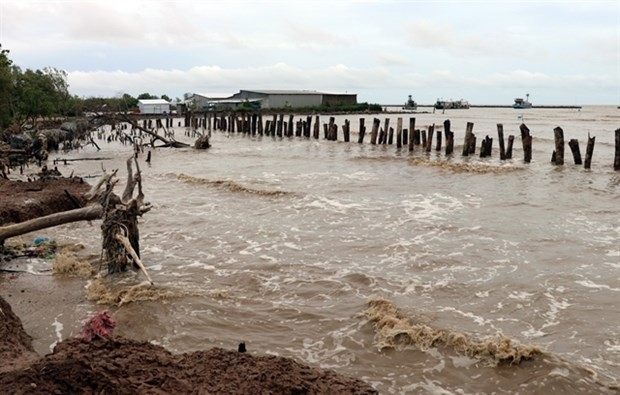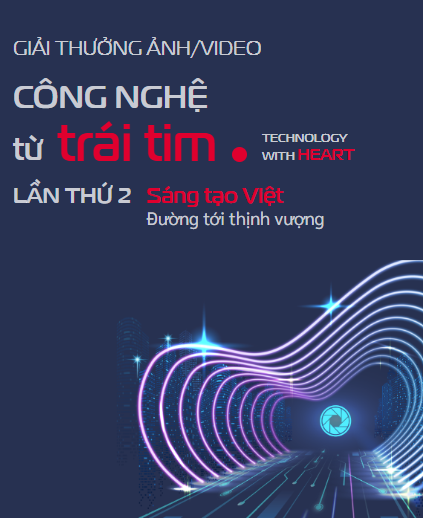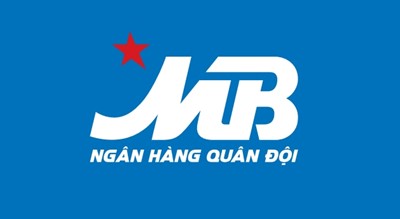Over the course of its 75 years, VNA staff have immersed themselves in every change in the nation. Generations of journalists volunteered to head to the battlefields and exchanged blood and sweat for vivid stories on Vietnam’s resistance wars against foreign invaders. During peacetime, they have written articles supporting economic development and shed light on a host of issues, thereby contributing to national development and keeping news flowing.
Merging with the flow of the nation’s history
According to VNA General Director Nguyen Duc Loi, member of the Party Central Committee, 75 years after the broadcast of first news bulletin, compiled by Tran Kim Xuyen and edited by President Ho Chi Minh, VNA has become the key multimedia news agency in the country, producing up to 1,000 news items every day in both traditional and modern forms.
From a small group of communications officials and patriotic intellectuals at the information department under the communications ministry of the then Provisional Government of the Democratic Republic of Vietnam, VNA today boasts more than 2,200 staff members, including cadres, reporters, editors, technicians and other staff members, and has a presence in Vietnam’s all 63 cities and provinces and 30 countries and territories on all five continents. It is currently a partner of more than 40 news and press agencies around the world.
During wartime, according to Loi, VNA reporters and technicians found themselves in the most-dangerous of places. Not only reporting on battles as witnesses to history, they also directly engaged in combat. Many generations of VNA reporters and technicians went to the front, and over 260 laid down their lives there.
Many others lost limbs or suffered serious injury or illness as they tried to cover the latest development on the front through news items, photos, and articles.
There were, in fact, no fierce battles at which VNA reporters and technicians were not present. They truly were “press fighters”, not only providing updates on developments on the battlefield but also helping consolidate confidence in victory.
When the country entered its period of industrialisation, modernisation, and international integration, VNA began a new period of breakthrough development in terms of organisational structure, management and news production mechanisms, and equipment, continually debuting new publications for internal and external information services.
Keeping up with the trend of the era, in the early 1980s, VNA continually launched Vietnamese-language newspapers, such as The thao & Van hoa (Sports & Culture) in 1982, Tin tuc (News) in 1983, and Khoa hoc & Cong nghe (Science & Technology) in 1983. During the Doi Moi (Renovation) period, in the early 1990s VNA took the lead in publishing many foreign-language newspapers, like Viet Nam News in 1991, Vietnam Law and Legal Forum in 1994, and Le Courrier du Vietnam in 1994. After that, the VNANET website opened in 1998, turning VNA into one of the first press agencies in Vietnam to be present on the internet.
Aside from affirming its role as a source of news, VNA has also provided the public with up-to-date information via new forms of media, like VNews - the first TV channel specialising in new reporting, and VietnamPlus - an e-newspaper published in six languages. On March 24, 2015, VNA debuted five new products: infographic news, audio news, a sub-web on integrated news and photos, the fortnightly “Kinh te Viet Nam and The gioi” (Vietnamese and World Economy), and the bilingual pictorial “Dan toc & Mien nui” (Ethnic groups & Mountainous areas), in Vietnamese and ethnic minority languages such as Tay, Xe-dang, and Co-tu.
From a news agency with a few staff, VNA is now a leading multi-media agency in Vietnam. It operates under the consortium model, with 28 affiliates, including 16 news departments for domestic and foreign services (consisting of seven editorial departments and news centres: domestic news department, world news department, news for foreign services department, economic news department, press photography department, documentation-infographic centre and television centre; nine editorial offices of print and electronic newspapers and magazines: VietnamPlus e-newspaper, Tin Tuc (The News) newspaper, The thao & Van hoa (Sports & Culture) newspaper, Viet Nam News, Le Courrier du Vietnam, Vietnam Pictorial, Vietnam-Korea Times weekly, the Ethnic Minority and Mountainous Region Pictorial, and Vietnam Law & Legal Forum), along with five news support centres, a publishing house and two printing companies.
With representative offices in all 63 cities and provinces nationwide and 30 overseas bureaus on five continents, VNA has a strong contingent of reporters working around the country and in most of the key areas of the world. This is a unique advantage no other press agency in Vietnam possesses.
The agency produces over 60 media products, from source news in the forms of text, photos, television, infographics, and audio, to modern news products like Megastory, long-form, and RapNews published on various platforms like bulletins, print and electronic newspapers, television, multi-media and social networks.
“With the power of information, VNA has, and is making effective contributions to national construction and defence as well as socio-economic development,” Director General Loi emphasised. “In particular, VNA’s sound cooperation with over 40 news agencies around the world has contributed to relations between Vietnam and other countries and assisted Vietnam’s global integration process.”
Pioneer in delivering news from hotspots
With the COVID-19 pandemic a global threat, VNA reporters have made valiant efforts to deliver fast, accurate, interesting, and diverse news, just like veteran journalists did during the resistance wars, or like young journalist Dinh Huu Du, who laid down his life in October 2017 while reporting on the devastating flooding in Nghia Lo district, Yen Bai province.
Working tirelessly to provide readers with the latest news on COVID-19 epicentres, such as Da Nang and Quang Nam in July and Hanoi and HCM City in March, as well as in many hotspots around the world, VNA journalists experienced mounting time pressure as well as the threat of infection for both themselves and their families. But they were accompanied by their colleagues, who supplied them with the necessary logistics, protective gear and tools.
“Such support and concern for colleagues who pioneer working in difficult localities remind us of the days VNA journalists ready to go to the southern battlefield in the 1960s and 1970s to work together with their colleagues of the Liberation News Agency (Thong tan xa Giai Phong),” Loi said.
The COVID-19 information campaign, he went on, is just one example illustrating the significant contributions VNA reporters have made to maintaining social stability and bringing a peaceful life to all.
Both in war and in peace, VNA reporters have affirmed their leading role in delivering news from hotspots around the country and the world, ensuring that VNA remains a key provider of accurate and trustworthy news for the local press and prestigious news agencies in the region, with a wide range of modern and interesting news products.
VNA’s standout news products have been well developed thanks to its staff’s dedication, dynamism and creativity. Many reporters have experienced formidable challenges while working in difficult locations such as mountainous areas and islands, or in times of crisis.
VNA journalists have worked from natural disaster zones or at the sites of major incidents to provide news, spent sleepless nights waiting for information from the Ministry of Education and Training on national high school exam fraud cases in 2018, or sat up all night at Dong Dang railway station on the Chinese border to secure a good position to record the arrival of Kim Jong-un for the US-DPRK Summit.
VietnamPlus reporters spent days in wet jungles to find “Crime under the Forest Canopy”, or worked days and nights to follow on Da River water pollution cases, to name but a few cases.
“Such efforts can be attributed to the dedication of VNA journalists, who always maintain political bravery and professional ethics, towards their career and their dynamism and eagerness to learn more,” said Loi.
Keeping pace with new trends
Recognising that the press is experiencing major changes, Director General Loi affirmed that VNA will stay abreast of the latest trends. The booming development of science and technology means that rapid changes in public demand for information access is challenging news agencies and news outlets everywhere.
“From a professional perspective, VNA believes this is an opportunity to change and reform modern journalism, avoid old ways of thinking, and strive for the best in communication,” Loi affirmed.
Aware of the new requirements very early, along with developing media products that show the strength of different units and which supplement thousands of traditional news products each day, VNA put into operation a new information portal in 2018 gathering together all of its news products. In September 2018, on the agency’s 73rd Traditional Day, it launched a large electronic information board at its headquarters at No.5 Ly Thuong Kiet Street, Hanoi.
In fact, VNA has made good preparations to anticipate new trends in the Fourth Industrial Revolution. With sufficient technical and personnel foundations, it has gradually developed towards a multi-media model on a multi-platform basis, to bring into full play all press products and meet the increasingly diverse demands of the public.
Many units of VNA have picked up national and international awards. For example, the Chatbot app of the VietnamPlus e-newspaper won first prize at the OANA Awards for Excellence in News Agency Quality, at the 44th OANA Executive Board meeting in 2019. VietnamPlus was also ranked among the five most innovative editorial teams in the world, despite its small size, by WAN-IFRA in 2015.
“We can be proud that the Vietnam News Agency is part of the world information flows, keeping pace with the global media’s development in producing modern news types and continuously expanding new channels,” Loi said.
Acknowledging VNA’s major contributions over the last 75 years, the Party and the State have granted three “Hero” titles to the agency: one “Labour Hero in the Renewal Period” title and two “Hero of the People’s Armed Forces” titles (for the Vietnam News Agency and the Liberation News Agency), together with many other awards, such as the Gold Star Order, the Ho Chi Minh Order, and the Independence Order, First Class.
With the slogan “There is only the starting point, not the end point”, information brings power to VNA, but it is only strong when it quickly accesses and is welcomed by a large number of readers. VNA journalists have therefore exerted every effort to ensure their news stories reach readers globally. Titles and awards are a reminder for each official, reporter, editor, technician, and employee about their duty to do more to continue writing more pages of the agency’s glorious history.
Laying emphasis on the personnel matter, Loi affirmed that the development of human resources must ensure quantity and higher quality.
He asked VNA staff to actively learn more, improve their modern journalism and foreign language skills, and continually improve their political virtue and professional ethics.
VNA will also continue taking advantage of external activities to learn from international experience to serve readers from all corners of the world with high-quality news products, thus contributing to disseminating the country’s socio-economic development achievements as well as the beauty of the Vietnamese nation and its people.
“When beginning a new working day, we should assign tasks to ourselves, and at the end of the day look back to check on the results,” the VNA leader said./.
Box: Vietnam News Agency is proud to affirm that its formation and development history is closely associated with the country’s history.
The agency published its first bulletin on August 23, 1945. On August 24, 1945, President Ho Chi Minh gave it the name “Viet Nam Thong tan xa”. On September 15, 1945, it broadcasted the full text of the Declaration of Independence, which gave birth to the Democratic Republic of Vietnam, in Vietnamese, English and French. On October 12, 1960, “Thong tan xa Giai phong” (Liberation News Agency) was born to meet the requirements of the country’s new phase of resistance war. A year after national reunification, “Viet Nam Thong tan xa” and “Thong tan xa Giai phong” were merged, becoming “Thong tan xa Viet Nam” (Vietnam News Agency).
These are the major milestones in the agency’s glorious history, which came from efforts and intelligence as well as the sacrifice of generations of VNA journalists.
VNA/VNP


















